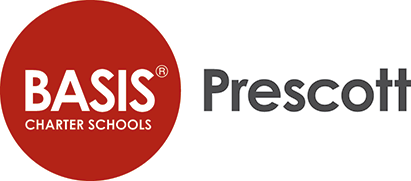Week 9: Booklet-Making!
Hello everybody!
My plan for this week was to finalize edits to my pamphlet and have the copies printed at Staples. I was prepared for a very straightforward week, but it quickly became one of the most hectic weeks of my project. On Monday, I met with my on-site advisor to finish editing my pamphlet. The meeting went well, and that evening I uploaded a pdf of the booklet to Staples. I expected the pages to look the same as the ones I had designed on Canva, but instead, the extra bleed margins created several inches of white space on every page. I couldn’t figure out how to change this, so I decided I would stop by Staples and ask for help the next day. At this point, the sixteen-dollar price for one pamphlet didn’t even register in my brain.
On Tuesday, I went to Staples to see if there was any way to get rid of the extra margins. The lovely woman working at the print counter explained to me that I would have to have my booklets printed off-site and then shipped to the store if I wanted them to look the same as my template. She also warned me that this would result in an extra fee because they wouldn’t be able to print my documents in-house. Without the fee, the cost to print 25 booklets at Staples was a whopping $350.
At this point, I had no idea how I should go about printing my pamphlets. My two choices were either to pay the hundreds of dollars to have them printed at Staples or to cut out half of the pages to have them printed through Canva. Stressed and flustered, I mentioned my predicament to my boss, who is also one of the most wonderful people I know. She offered up a third option: printing the booklets in the office and putting them together myself. As I’ve mentioned, I’m not the craftiest person, but after an entire day of toggling between two Canva screens and messing around with printer settings, I successfully printed out all of the pages needed to make 25 booklets!

On Thursday and Friday, I worked on cutting and binding the booklets, which really looked like trying to evenly cut stacks of eight pages and staple them together along the crease. By Saturday, I had successfully created 25 imperfect booklets that I am so excited to share with all of you, and if you ignore the uneven page lengths and odd staple hole or two, I don’t think they look half bad! My original template also underwent several changes throughout the printing process. I ended up deciding to include my bibliography and glossary as a QR code at the end of the booklet to cut out a few extra pages, and I had to resize and organize the information on each page to fit within the margins of half of a letter-sized piece of paper. Even though the process wasn’t the easiest or most enjoyable, it was really rewarding to finish this final piece of my project with my own hands.

Going into this project, I had already planned out exactly what my day-to-day process would look like. I never expected to be drawing digital artwork or binding pamphlets together by the end. I also had the preconceived idea that I would learn a lot about the mathematics of encryption throughout the ten weeks I had, but I definitely didn’t expect to learn so much of the history behind the math. One of the patterns I’ve noticed throughout my research, and a pattern that I’ve discussed in-depth with Dr. Ismert, is the idea that the math usually comes about far before a physical utility is realized. This idea of doing abstract research just for the sake of doing research and having the faith that something will become of your results isn’t attractive to everyone, but I’ve found that I really do enjoy it. After a week of paper cuts and hours spent stapling pamphlets together, I have a new appreciation for the people who love to work with their hands and create something tangible. As much as I understand why this is appealing, I would much rather be researching the intangible or even brainstorming ways to explain my research, another aspect of my project that I didn’t fully understand the importance of until I was doing it.
As satisfying as it is to be able to see the product of hard work, I think it’s even more special to be able to give someone insight into the possibilities of the future, and that’s the role that I’ve been lucky enough to take on, at least to some extent, throughout this project. No one knows exactly what quantum computing will look like in fifty or a hundred years, but the science that has existed for years can tell us what is possible. This unbounded sense of possibility that comes with abstract research is what draws me to the field of math, and if nothing else, this project has allowed me to put a finger on exactly why I love what I love.
Next week is the very last week of my project, and I want to conclude my project with a broad review of all of the different algorithms I researched, the patterns I found, and the importance of encryption as a field. I can’t believe I’m already reaching the very end of my senior project. This has been such an amazing experience, and I want to thank all of you for following along throughout the entirety of this process. Until next week!
